Confessions of an Art World Detective
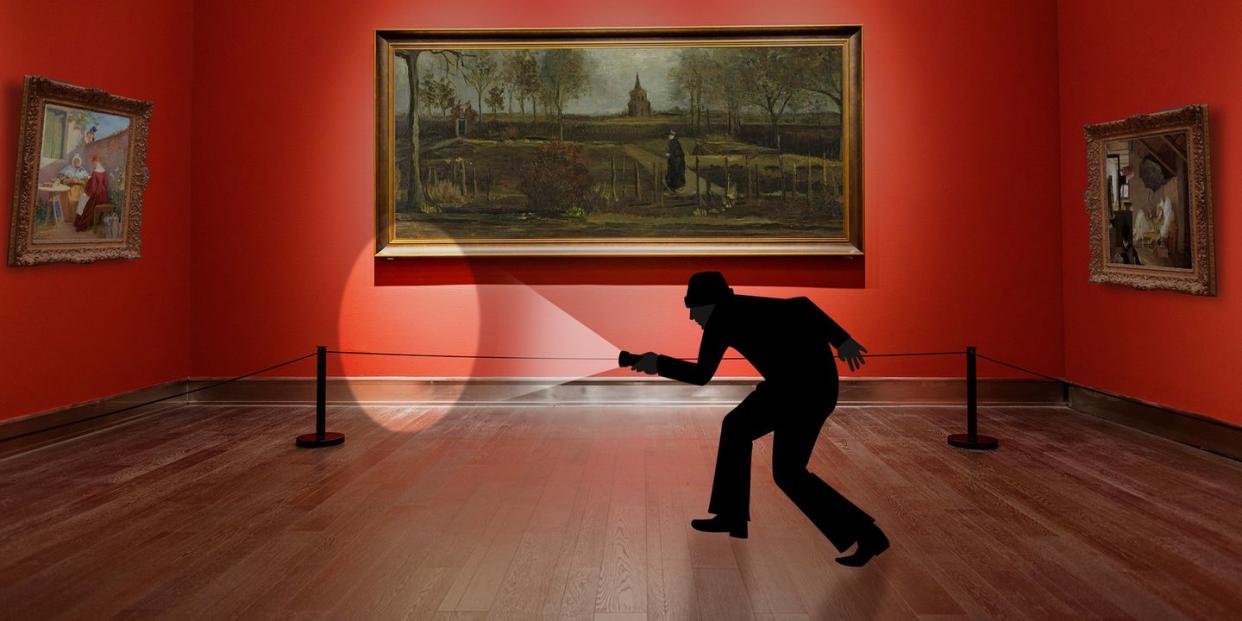
René Allonge, director of the Berlin police department’s art crimes division, was six years old when one of the great heists of the 20th century shook the establishment of his native East Germany. At around 2 a.m. on December 14, 1979, a burglar equipped with crampons scaled a drainpipe up to the third floor of the Schloss Friedenstein, a 17th-century Baroque palace turned museum in the town of Gotha. A new alarm system wasn’t yet operational, and that allowed the intruder—who probably had inside information—to cut through a window and slip undetected into the exhibit halls. He took the works of five masters, including Jan Brueghel, Frans Hals, Hans Holbein, and, it was then believed, Jan Lievens or Ferdinand Bol, two Rembrandt protégés. The deed done, the thief descended the castle wall, climbed into a getaway car, and disappeared into the night.
Bad news didn’t get a lot of play in the communist dictatorship of the German Democratic Republic, and Allonge has little recollection of the robbery or of the unsuccessful decade-long manhunt that followed. But this crime from his childhood would turn out to be a defining moment in Allonge’s life, and in his country’s history. After Germany was unified in 1990 and Allonge fell into police work in Berlin, he took an interest in the ice cold case. He had worked his way up to become the country’s top art cop when, in July 2018, a shadowy German lawyer approached Gotha’s current mayor, Knut Kreuch, and claimed that the holders of the masterworks were ready to sell them. Through a foundation, Kreuch raised the $6 million ransom (a fraction of the paintings' $30-to-$40-million value), but with one condition attached: Before the money could change hands, the works would have to be authenticated by a lab in Berlin. Officials at the lab, worried about having anything to do with stolen artwork, had their superiors tip off Allonge at the Landeskriminalamt, or State Police Office, that a meeting was imminent.
On the morning of September 30, 2019, Allonge’s surveillance team watched as a van parked in front of the lab and two men (one of whom was the lawyer) unloaded five bubble-wrapped canvases. The unit then began an investigation that succeeded in retrieving the stolen works and charging both men with blackmail. The paintings, slightly the worse for wear, were returned, after some restoration work, to the Schloss Friedenstein in December 2019—precisely 40 years after they had been snatched. (They have just gone on exhibit: "Back in Gotha: The Lost Masterpieces" can be seen at the Friedenstein palace through August 2022.) And that was that—except that it wasn't.
Although the chances of identifying the original thief were at that point slim to none, Allonge couldn’t get the case out of his head. Friederike Gräfin von Brühl, a Berlin attorney who specializes in art fraud cases, calls the detective “one of these righteous men, engaged in a battle for the truth. He always goes further. He doesn’t let go.” Allonge, who is soft spoken and has a quiet intensity and cooly observant manner, acknowledges his doggedness. “It was a very old case. But I needed to find out who did it,” he tells me one afternoon late last summer.
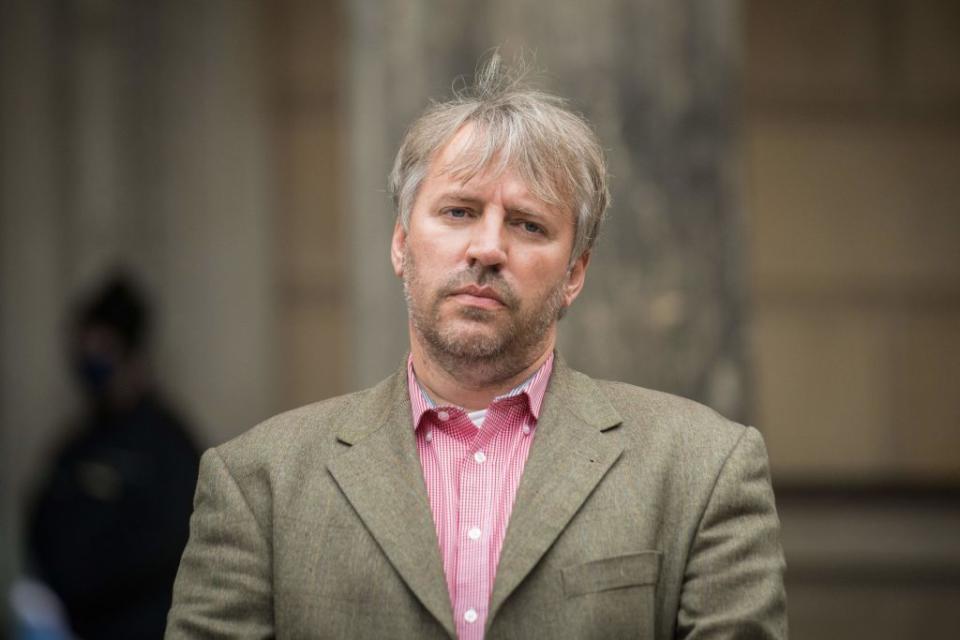
Allonge has spent the last 13 years unraveling some of his country’s deepest secrets. He joined Berlin’s art theft and fraud division, the Kunstdelikteabteilung, in 2009, when he was 35, and became its head a year later. Still tousle-haired and youthful-looking at 48, he may not look the part of detective extraordinaire, but as vivid accounts of the latest museum heist, art forgery scandal, and other Kunst-related criminality have filled the German media, Allonge has enthralled the public with one dramatic investigation, arrest, or recovery after another.
The most recent Allonge-related headlines came in November 2021, when the curator of the "Back in Gotha" exhibit announced that the stolen work previously identified as a painting by a Rembrandt apprentice—a portrait of an elderly man dated to between 1629 and 1632—might well be the work of the Dutch master himself. Analyses are underway.
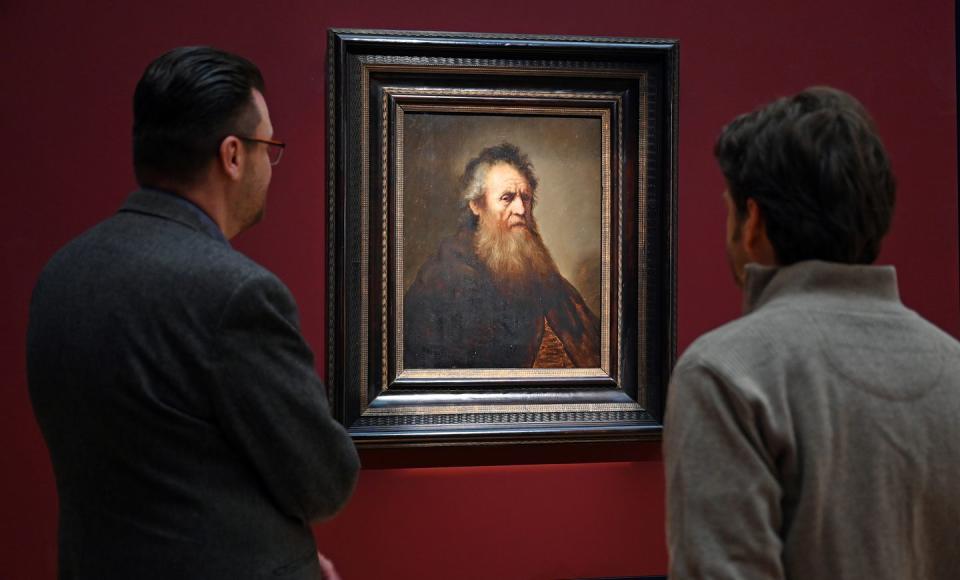
A dark field.
Many of Allonge’s cases have underscored Germany’s role as Europe’s art crime epicenter, where the legacy of the Nazis, postwar division, and Cold War tension have colored a special brand of illegality. They also reflect the more recent rapid growth of art-related crimes worldwide. Eighty years after the Nazis’ European looting spree, a formidable array of new actors are posing a threat, from internet-savvy antiquity smugglers seeking buyers on the web for looted treasures from the Middle East and North Africa, to common criminals drawn to art because prices continue to soar and the payoffs seem so good.
"Art crime had been there from day one—when the paint on the first sarcophagus in ancient Egypt was still wet, the first looters came in," points out Arthur Brand, a Dutch private detective who sometimes works with Allonge and is famed for his recovery of a 1,600-year-old Greek mosaic of St. Mark, a ring belonging to Oscar Wilde, and paintings by Salvador Dalí and Picasso. "But now it's skyrocketing."
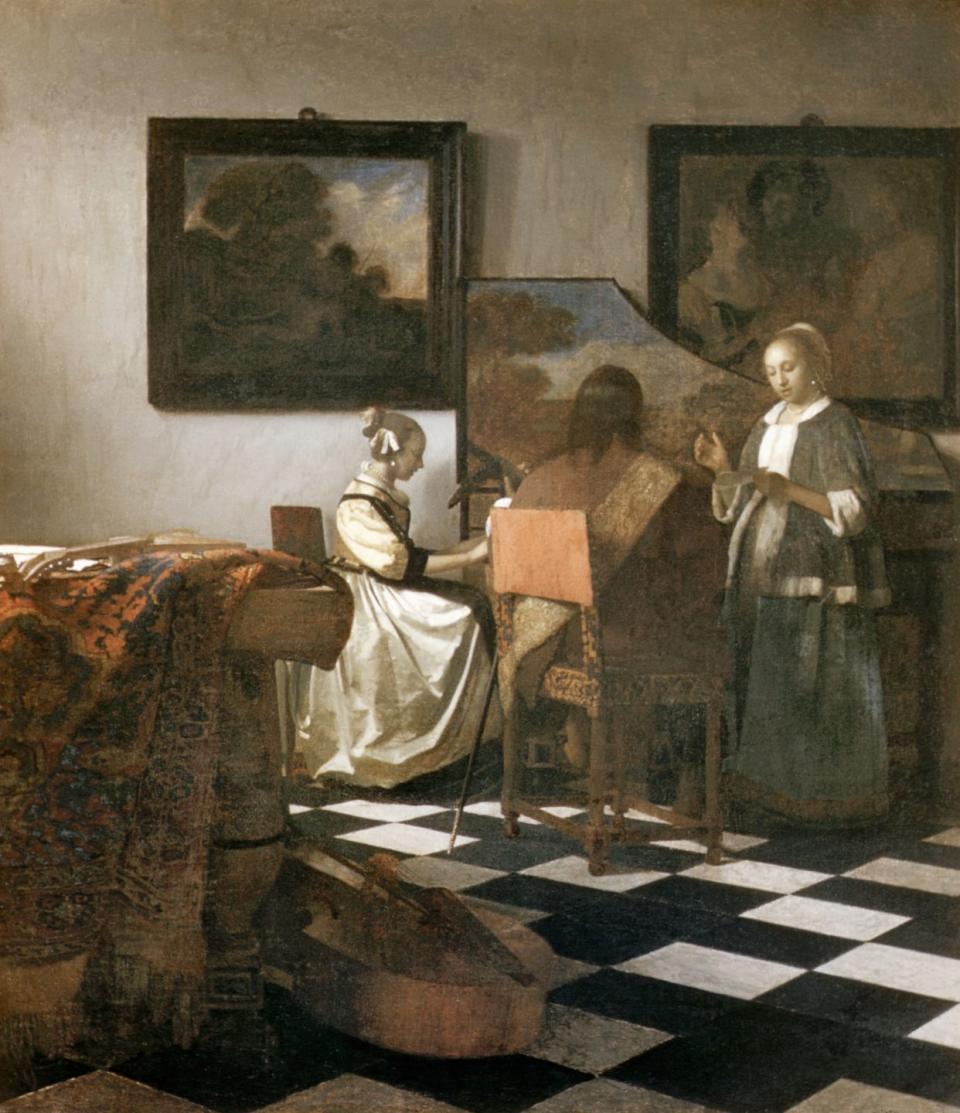
This year, UNESCO placed the annual value of stolen art worldwide at nearly $10 billion, a figure that has grown by about 40 percent in the last decade. Interpol maintains a “Stolen Works of Art” database that to date contains listings for 52,000 unrecovered items. The works include Vermeer’s The Concert, taken in 1990 along with 12 other masterpieces from the Isabella Stewart Gardner Museum in Boston (the biggest art theft in modern history), and van Gogh’s The Parsonage Garden at Nuenen in Spring, painted in 1884 and stolen from the Singer Laren Museum in the Netherlands in 2020 during a coronavirus-compelled closure.
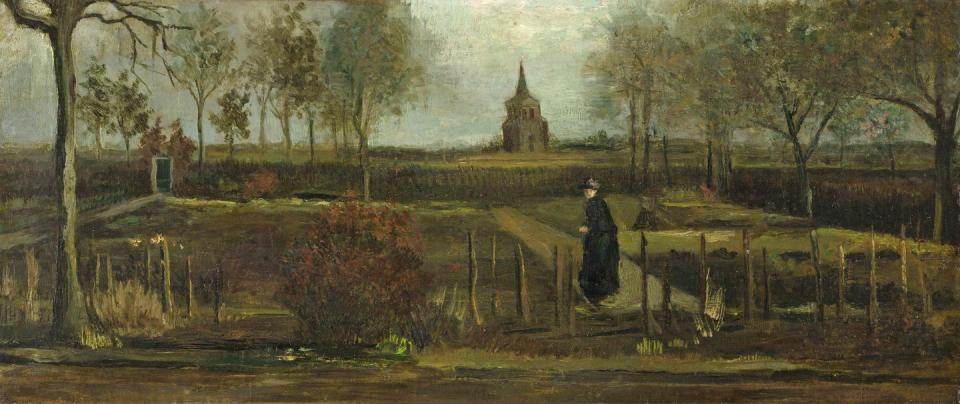
When I ask Allonge about Germany’s reputation, he bristles. “Germany is not the only place for spectacular break-ins,” he says. France, Holland, and Italy also have “great art cases, burglaries and forgeries.” Part of the reason for my having this impression, he says, might be that Germany's art crimes units "have been the most aggressive in Europe. This is a big dark field, and we investigators are making it visible." And as we discuss what happened during the Nazi era, and under Communism, he concedes that Germany does play a special role in “that big dark field…because of our own history.”
Adolf Hitler, a failed painter, sought to enrich the Third Reich and its leaders by gathering up the world’s most beautiful artworks, with the goal of establishing the Führermuseum in his hometown of Linz, Austria, as a showcase for the Nazis’ plunder. (He never got it built.) Wehrmacht generals oversaw the systematic theft of artworks and cultural artifacts in occupied Europe, transporting tens of thousands of paintings, drawings, prints, sculptures, tapestries, furnishings, and other objects to near-impregnable tunnels in Bavaria. "The two top leaders of this gangster society, Hitler and Goering, both fancied themselves art experts, and on top of that they had this notion that whatever they wanted they were entitled to," says Edward Dolnick, author of The Forger's Spell, about a Dutch faker of Vermeers who conned Goering. "Hitler and Goering set the tone. And they rationalized the looting as simply giving a proper home top what should be theirs."
In the final months of the war, the Allies dispatched a small corps of art historians, museum curators, and other experts—the team became known as the Monuments Men—to hunt for and recover stolen art. But tens of thousands of works have never been recovered. Many of them are believed to reside in private collections, their provenance lost, unknown to, or hidden by the owners. Sometimes, something resurfaces—but so do fakes that bypassed the usual scrutiny of art experts, who were stupefied by their supposedly serendipitous reappearance.
After World War II, the Soviets carried out a second mass looting. The Extraordinary State Commission to investigate Nazi crimes in the Soviet Union, formed in Moscow near the end of the war, determined that the Nazis had stolen, destroyed, or damaged 564,723 museum objects, worth $1.25 billion, in what were now Soviet or Soviet-occupied zones—including Catherine the Great's collection in Leningrad and virtually every piece held in the museums of Minsk and Kiev. In retaliation, the specially formed Trophy Brigades swept through fortresses and bunkers where the Nazis had hidden the art and took back to Russia everything they could get their hands on. (Some of these works were held in secret depositories for five decades before Boris Yeltsin revealed their existence in the wake of the Soviet Union's collapse. Other treasures had been turned over to Germany shortly after Stalin's Death, including the priceless Green Vault Collection—which became the target of yet another heist in November 2019.)
The criminality continued unabated for years, merely assuming new forms. In the 1950s, Alexander Schalck-Golodkowski, East Germany’s foremost procurer of hard currency, threatened to prosecute art collectors for tax evasion, then shook them down for their paintings, porcelain, and silver. He sold the treasures to wealthy clients in the West through a shadowy antiquities outfit. "Many collectors did not survive this harassment and committed suicide," says Allonge, who supports a proposal that the owners of confiscated works should receive restitution from the German government.
In recent decades an influx of criminal groups from war-torn countries in Eastern Europe and the Middle East has further helped make Berlin a center of organized crime—including the trade in stolen art. Allonge has watched, astonished, he says, as the groups have risen from bands of small-time hoodlums to powerful, Sopranos-style syndicates. “They have hierarchies. They have lawyers who manipulate the press,” he says. “They’ve become like big companies.” Add to all these factors the breadth and richness of German art, from Albrecht Durer to Hans Holbein to Max Ernst; wealthy collectors; and some of the premier art museums in Europe, and it's not surprising that the scame, schemes, and plots keep coming. And that they keep Allonge on a constant foraging mission through the past, digging up evidence of his country's torments and intrigues.
Critical breakthrough.
Allonge’s base of operations is the drab fourth floor of a five-story modernist hulk across the road from the defunct Tempelhof Airport. The conference room where we meet is decorated with some of the fakes that he and his predecessors have confiscated over the years: a pen-and-ink drawing meant to pass as the work of the 19th-century German realist Adolf Menzel; a still life purportedly by the Dutch-German Expressionist Heinrich Campendonk; an abstract print that passed as a Chagall. “That was sold for a lot of money here in Berlin in the 1990s,” he says, still somewhat incredulous.
Allonge’s route to the art crimes beat was circuitous. Growing up near the Baltic Sea, and eager to see the world, he joined a commercial fishing crew at 16. Two years later East Germany ceased to exist, and many state enterprises, including the fleet, dissolved. He moved to reunified Berlin in 1992, and a fascination with solving puzzles and a proclivity for natural sciences drew him to detective work. After graduating from the police academy in 1995, he was assigned to a unit in the seedy area around western Berlin’s main train station. But he “didn’t fit in,” Allonge says. "I wanted to solve every case, no matter how small," and he was overwhelmed by the deluge of petty cases. He was transferred to the Landeskriminalamt, whose investigators handled the area’s most serious cases, including homicides, major robberies, and organized crime. And in 2009 he joined the newly founded arts crime department. Expertise in art was not necessary, says Allonge, who had rarely visited a museum–although an aptitude for interrogation and the ability to connect the dots were.
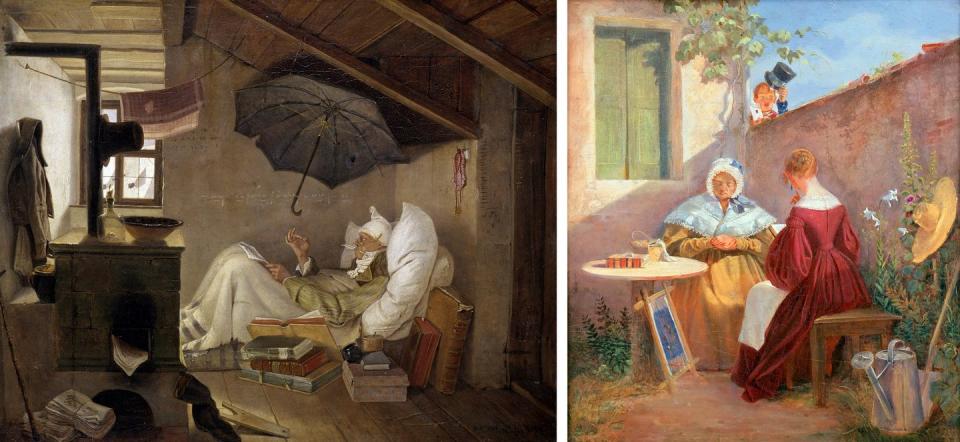
The explosion of the art market had led to a surge of robberies targeting museums and the homes of the wealthy. At the time Allonge and his colleagues joined the new unit, the police had compiled a mixed record on prominent art theft cases. Three high-profile art thefts in Berlin had shocked the German public and exposed glaring weaknesses in museum security systems. In 1988 a thief had snatched from the wall Lucian Freud’s 1952 masterpiece Portrait of Francis Bacon at the Neue Nationalgalerie in Berlin, while it was on loan from London's Tate. One year later, two men entered Berlin’s Charlottenburg Palace and ripped off the walls two oils by the German romanticist Carl Spitzweg: The Love Letter and his beloved 1839 portrait The Poor Poet. (“Every German knows that picture," Allonge says. "It’s the Mona Lisa for us.”) Both cases remain unsolved more than three decades later.
Then, in 2002, robbers broke into the Brücke Museum, in a wealthy Berlin suburb, and made off with nine German Expressionist paintings valued at $3.3 million. This time there was a happy ending: The police found all nine works two weeks later and arrested five people for the crime.
Allonge quickly improved the department’s percentages. In early 2010 he heard from sources that a gang was consigning forgeries of German Expressionist works, including ones by Max Pechstein, to galleries and auction houses across Western Europe—all affixed with labels from the collection of one Alfred Flechtheim, a Jewish art dealer who fled to England after the Nazis seized his German galleries in 1933. The lawyer Friederike von Brühl visited Allonge in his office, along with an expert in the works of Max Pechstein, to alert him to the ongoing fraud. “We spent six and a half hours with him. He was grilling us about every detail of the case.” Allonge concurs: "I was intrigued. But I didn't see the size of it. I only saw pieces of the puzzle. But gradually the whole plot came together."
Allonge tapped the phones of three people who had represented the fakes, including a woman named Jeanette Spurzem and her sister Helene Beltracchi. When Allonge went to interrogate Spurzem at her Cologne apartment, her teenage son grew distressed as Allonge fired question after question at his mother about the apparent fraud. “This can only have something to do with Wolfgang from France,” the boy finally blurted out. “He always makes art.”
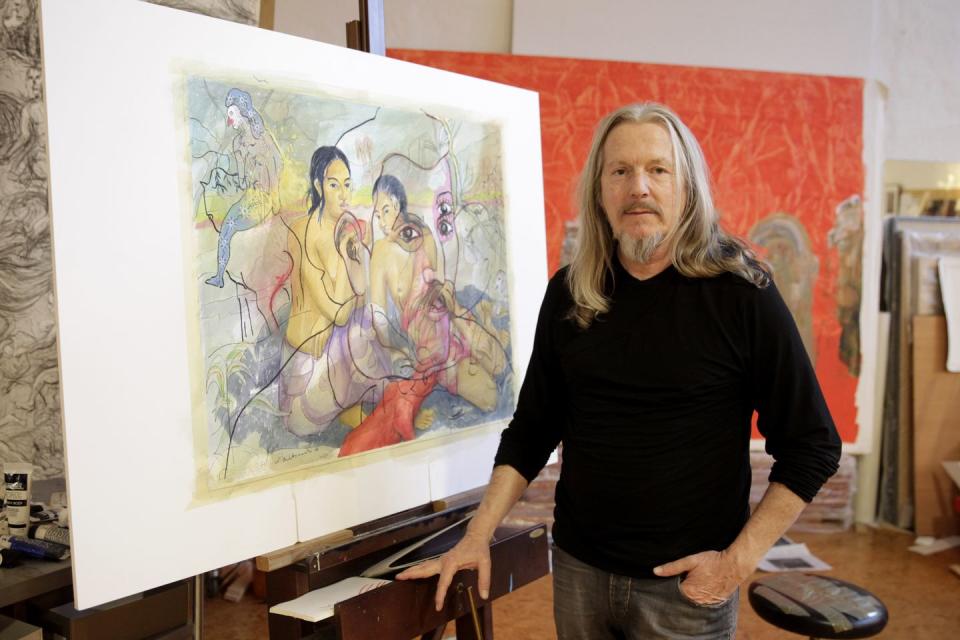
It was a critical breakthrough: Wolfgang Beltracchi, formerly Wolfgang Fischer, was known to the police as a member of a gang that had produced forgeries in the 1990s; he had then apparently gone underground. He had married Helene Beltracchi and taken her last name, and she passed off his forgeries as part of the lost Flechtheim collection—claiming that the dealer had entrusted the works to her late grandfather, a Cologne industrialist. When Allonge interviewed other members of the industrialist's family, he discovered that the man had never known Flechtheim. "Then everything collapsed like a house of cards," he says.
On August 25, 2010, Allonge and his team swept across Germany in the largest raid ever carried out by the art crimes unit. They burst into a museum that was about to sell for $5.8 million a phony Fernand Léger, with a Flechtheim label, to a buyer in the United States. The police arrested the Beltracchis as they returned to their $7 million home in Freiburg, in western Germany, from their villa in France. Their 2011 trial lasted 40 days, they received prison sentences, and were ordered to pay just under $40 million in restitution. "I do think the amount of damage [Beltracchi] did, the repertoire of artists that he faked, is unique in European criminal history," says Allonge. "I've never had a case again, so far, on this scale."
Something strange.
The Beltracchi case turned Allonge into something of a police celebrity, a rarity in Germany, where officials cling tightly to their anonymity. (This is the first time he has agreed to talk at length to an American journalist on the record.) “We had to think about whether I should become the public face of the department,” Allonge says. “In the end, we figured the benefits outweighed the negatives.’’ The attention, he explains, “has led to a sharp increase in tips about stolen works and has helped reassure some wealthy victims of crime that they can put their trust in the division.” But Allonge stresses that he is just one player on a team of nine experts. A couple of them pop into the conference room to greet the boss as we talk, but Allonge won't let me speak with any of them; because they work undercover, it is vital to protect their identities.
He and his team also consult a network of outside experts, including collectors, scholars, lawyers, and art dealers, “anyone who might suddenly tell us, ‘There is something strange going on here.’ ” But having an ear to the ground is no guarantee of success. Four photos of Lucien Freud's stolen portrait of Francis Bacon dominate the bulletin board above the desk in Allonge's office, a reminder to him that the perpetrators of one of the most notorious thefts in modern history are still at large. The problem is that thieves of famous works often can’t dispose of their hot goods and are obliged to hold them for decades. The best hope of recovery in such cases, Allonge says, is that the possessor of the stolen works—or perhaps the heirs—tires of having them around and seeks a buyer through middlemen. “This work,” Allonge says, “requires patience.”
Patience paid off in the next big case in Allonge’s career. In 2013 an art dealer came to him with photos that brokers with connections in the European underworld had sent to her. They were of two giant bronze horses cast by Hitler’s favorite sculptor, Josef Thorak. The statues had once flanked the entrance of Nazi headquarters in Berlin, but they had vanished in the aftermath of Germany’s defeat. Now, seven decades later, someone was putting up the Nazi art for sale—illicitly, since by law they belonged to the German government.
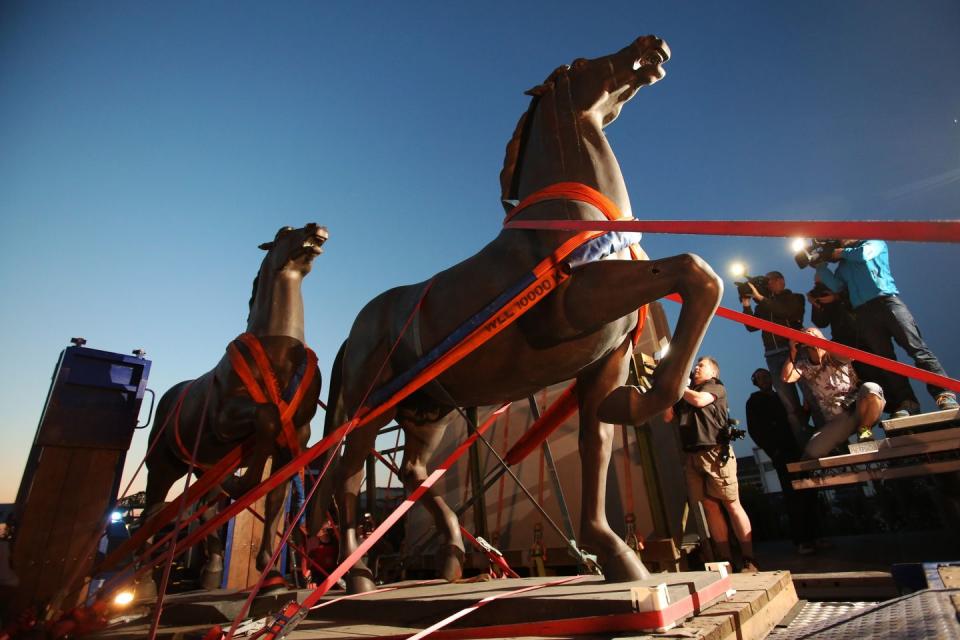
Allonge got help this time from outside sources. The Dutch private investigator Arthur Brand was also on the trail of the missing horses, posing as an agent for a fictional Texas billionaire with a passion for Nazi art. As such, he had also been contacted by individuals hoping to sell a half dozen other giant statues by Hitler's artists, including a 40-ton relief of Supermenschen that had been intended to adorn an archway in Hitler's planned world capital, Germania. Meanwhile, Konstantin von Hammerstein, an investigative reporter for Der Spiegel, was seeking info from his own trusted sources, former members of the Stasi, the East German secret police agency. “Allonge came to my office at the magazine and said, ‘I’m at a dead end. Can we work together?’ ” says Von Hammerstein. He had never been approached by, or even considered working with, a cop before.
Soon the three men were exchanging information on top suspects, including an elderly Nazi-art aficionado named Rainer Wolf in Bad Dürkheim, a town southwest of Frankfurt, and Klaus-Dieter Flick, an octogenarian magnate who had turned his seaside villa in Kiel into a showcase for Nazi memorabilia, including a World War II Panzer and Hitler's desk. "René told me, this guy has 60 machine guns at his house," recalls von Hammerstein. On May 20, 2015, Allonge and 200 other policemen, armed with search warrants, raided without incident Flick’s property in Kiel, Wolf’s property in Bad Dürkheim, and the homes of four other suspects.
The entire story, a uniquely German saga going back decades, soon came out. The Soviet Army had seized the Nazi art at the end of World War II and installed it on the sports field of a barracks outside East Berlin. In 1988, Wolf had bribed a Soviet officer and arranged to have the bronze horses and other statues cut into small pieces in a workshop and smuggled to the West, where they were all secretly welded back together. The statues had passed back and forth between Wolf and Flick over the decades, but Wolf now had everything stashed in a warehouse on his property. “Wolf’s children didn’t want to inherit these controversial objects, and they had threatened to blow them up with dynamite after Wolf died,” Brand told me. “So Wolf put them up for sale on the black market.”
Though Wolf had illegally taken government property, he wasn’t charged with a crime, because the statute of limitations had expired. The bronze horses, now held in a police station in Bad Dürkheim, are to be shipped this year to Berlin’s Spandau Citadel Museum. (Allonge still considers the horses' recovery a win. Having grown up under authoritarianism, he believes that "all art, even if it's ideologically wrong, must be preserved. It demonstrates the Nazis' megalomania. One must just draw the right conclusions from it.")
Unfinished business.
On a late summer morning I meet Allonge at one of his favorite destinations, Museum Insel, a 55-acre island in the historic heart of Berlin that contains five of Germany’s great museums. He has just driven in from his home in the countryside of Brandenburg, a half hour commute, and parked his black police van on a side street around the corner from the Pergamon, the country’s premiere showcase for ancient Egyptian and Assyrian art.
We walk along the Spree River toward the northern end of the island and stop before one of Berlin’s most recognizable buildings: the Bode Museum, a Baroque Revival colossus commissioned by Kaiser Wilhelm II in 1898.
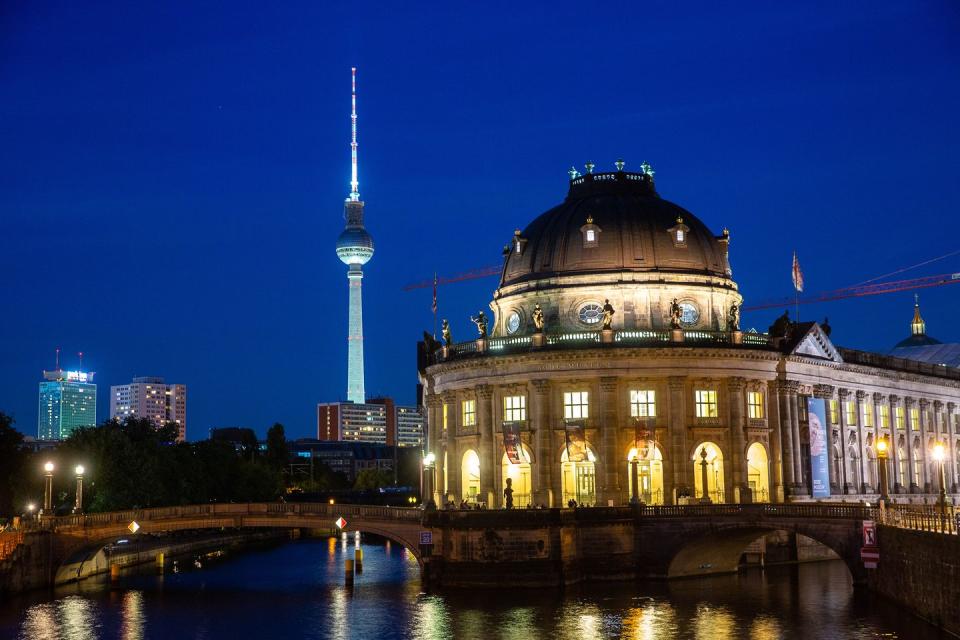
The Bode was the site of one of Germany’s most notorious museum heists: the March 2017 theft of a 220-pound, tire-size, solid gold commemorative coin from Canada, “The Big Maple Leaf,” valued at $4 million. Allonge gathered evidence that led to the conviction of two young members of the Remmo clan, the most flamboyant and violent of the German-Lebanese gangs in Berlin, as well as a guard who provided inside information about the museum’s security. He also was one of the first to notice similarities between that crime and the brazen smash-and-grab heist of the Dresden White Diamond and other treasures from the Green Vault at Dresden’s Royal Palace on November 25, 2019—a trove valued at a staggering $150 million. Two Remmos allegedly pulled off the Green Vault job while on trial for the gold coin robbery. This second trial, in which Allonge may testify, is set to start on January 28, and it is likely to generate further Allonge headlines. “The media interest in huge,” said one source I talked to in the state prosecutor’s office in Dresden. “We don’t know how we will fit everybody in.”
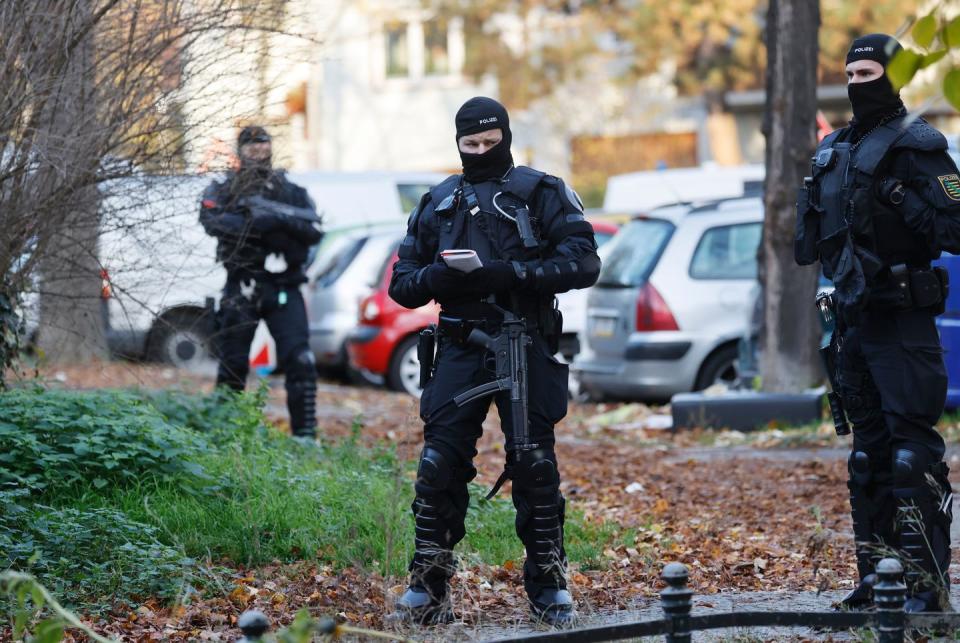
Allonge’s investigation into the Remmos was going on at exactly the same time that he was consumed by that much older museum heist: the 1979 Gotha robbery. His obsession with nabbing that thief—the one he told me he “needed to find”—led him, in 2019, to the homes of the children of a deceased couple in northern Germany. (Their names have never been revealed because of Germany’s protective postwar privacy laws.) The four children had hired the lawyer to unload the works after their parents’ deaths.
The couple’s daughter, a schoolteacher, recounted to Allonge how in 1986, months before the paintings appeared at their home, her parents had received a visit from Rudi Bernhardt, the East German brother of a friend. Bernhardt was a petty criminal whom the Stasi had just expelled to the West. Could Bernhardt, Allonge wondered, have stolen the masterpieces, perhaps as an act of protest, and smuggled them to his brother’s friends—apparently his only contacts in the West?
Bernhardt had died of leukemia in 2016, but Allonge found tantalizing clues in Stasi files that had become available after Germany’s reunification. Three witnesses had identified the getaway car as a blue Zwickau, a rare East German sedan; Bernhardt had driven the same model. Long ago the Volkspolizei, East Germany’s police, had recovered the crampons used to scale the wall, and they determined that the steel had likely been produced in one of two East German steel factories. Bernhardt had worked at one of those plants, had a record there of petty theft, and had training as a blacksmith.
There was more. A shoeprint found at the scene matched his size. Three acquaintances of Bernhardt had told the police in his hometown, in 1980, that they had seen him with the stolen paintings. Inexplicably, none of these details had been communicated to the investigators in Gotha. Allonge says the lapse was either a case of “serious negligence” or a deliberate attempt to suppress the information, for reasons that remain unclear. Allonge also learned from the daughter that Bernhardt had made a short return trip to the East in 1987, borrowing her parents’ Volkswagen Scirocco. Allonge suspects that he picked up the paintings and smuggled them into West Germany hidden in the trunk of the car.
When Allonge asked Bernhardt’s widow directly if she thought her husband was responsible for pulling off East Germany’s heist of the century, she refused at first to answer. Then, after he showed her the evidence he had gathered, she conceded that it was likely true. “She told me, ‘Rudi had two faces,’ ” Allonge says, still excited by her admission. “ ‘Many things in his life were a secret.’ ”
Identifying Rudi Bernhardt, even posthumously, was an especially satisfying victory in Allonge’s fight against crimes against culture in their myriad forms, and a reminder, he says, that common sense, not connoisseurship, is the most important attribute for an art crime investigator. “I think I am a good example that you can work successfully if you have a distance from things. It helps you to draw logical conclusions.”
As we stroll back to his black van, Allonge tells me he is eternally on the alert. Whenever he enters a gallery or museum, he is always "putting myself in the shoes of the robbers," and instinctually scanning for weak points in security and architectural design—large windows close to the ground, poorly made door locks, fragile glass display cases. And though he now gazes at art with greater appreciation and understanding than he did a few years ago, his mind often wanders in other directions: He finds himself questioning whether the work is genuine. "And I wonder about its provenance." Spoken like a man who has spent much of his life on the dark side.
A version of this story appears in the February 2022 issue of Town & Country. SUBSCRIBE NOW
You Might Also Like

